
Бесплатный фрагмент - St. Petersburg Fortress
Photostory about The Peter and Paul Fortress of St. Petersburg
From the author
Dear reader! Last time we left you as it is remembered, on Troitsk to the bridge (see Valery Pikulev and Valery Gulyakin’s book “Acquaintance to St. Petersburg. Photostory about the Great City”). What brought us on this bridge? — Yes, it is simple, from it, from Trinity Bridge, it is possible to survey all historical part of St. Petersburg at once, “right on the spot”. Moreover, for most of guests of St. Petersburg, and they arrive in our city, as a rule, from the South (from Moscow), it is simple not to bypass this bridge. Now “it is necessary to descend from the place”, nevertheless, — we pass from “nodding” acquaintance to the Great City to deeper which for the majority, it is sure, will turn into great friendship, — so, it is necessary to descend from Trinity Bridge and to go there from where the city began.
And so far we will look once more at our handsome, — at Trinity Bridge.
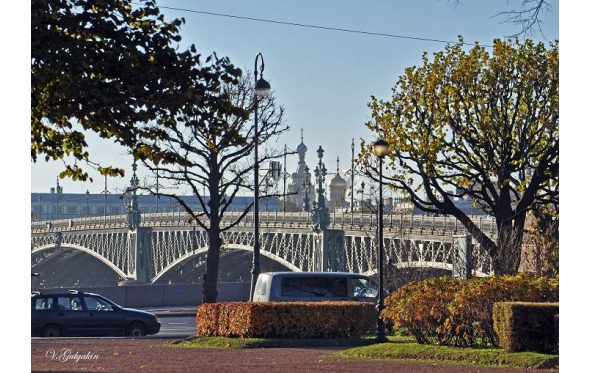
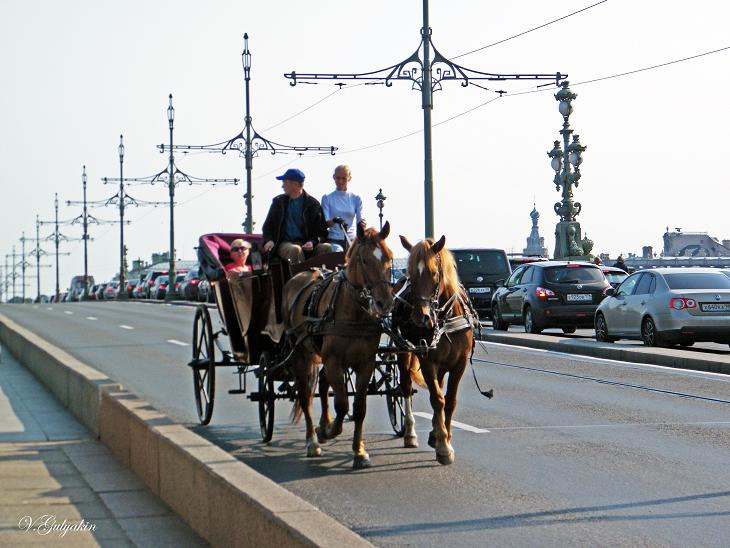
It is a little history
Rainy October, 1702. Troops of the associate and the friend Peter I, the general field marshal Boris Sheremetev take storm the Swedish fortress Noteburg. Pyotr participates in this nice business! No, not in the Commander-in-chief rank — save, God! — and only goal-scorer captain: he has no need “to be stuck out”, he and so — Pyotr The Great! This fortress, having a reputation for unapproachable hitherto, costs on the island in the mouth of the Neva River and, together with other fortress, — Nienschanz, — that is lower on a current, controls, and, speaking simply, — tightly bars for Russians all waterway from Lake Ladoga to the Baltic Sea. In half a year, at the beginning of May, 1703, the Nienschanz is given. Without fight.
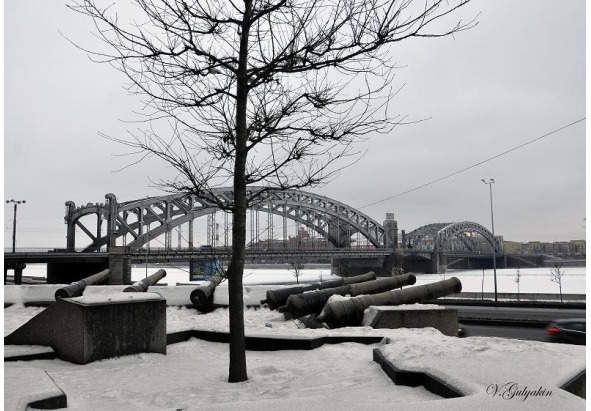
Well, on the lands which are just won from the Swede, on this major water communication, it is necessary to be fixed. Prompt in the rushes Pyotr makes the fast decision! And here, on May 16, 1703 — remember this blessed date (in old style)! — marshy coast of the Nevsky delta are disclosed by amicable knock of axes and squeal of saws: the forced construction of fortress began. — And, of course, on the island, that around water! The island is this, known to Swedes as Lust-Eland (“cheerful”), and to Finns — Enisaari, by Russians it was nicknamed Hare. But, about it a bit later…
Generally, St. Petersburg is located more than on 30 islands (and to these nobody found time to bring full clarity in this question: some bring their number to the 42nd if to consider also artificial). In the city 342 bridges (and together with suburban, there are a lot of more than five hundred: call even number 580). Five hundred bridges which hung over nearly fifty rivers, channels, small rivers and channels — than not Venice!
Let’s return, however, that May day. “In the 16th day of May (in a week of Pentecost) fortress is put and called Sanktpiterburkh” — so about this event the tsar Pyotr will write! This date — on May 16 (on May 27 on new style) 1703 — is also the Birthday of St. Petersburg!
Dear reader, at you can arise a reasonable question: and why, actually, on May 27, but not the 29th … — upon transition from the Julian calendar, — by the way, one of Pyotr’s reforms to which time in Russia was considered not since Christmas, and… from creation of the world! — and so, upon transition from the Julian calendar to Gregorian on which there lives the whole Europe it would be necessary to add 13 days, but not 11. And it is absolutely fair … — for start date of the twentieth century. To dates of the nineteenth century agreed to add only 12 days; for the 18th — already 11. And for all other centuries leaving deep into stories add 13 days, again “not to take a steam bath”. There is such piece!
The small island on which put fortress is separated from the neighboring huge island rather narrow, but quite fast by a channel. From this blessed island, all also began with it. There, on this small island, we will also go.
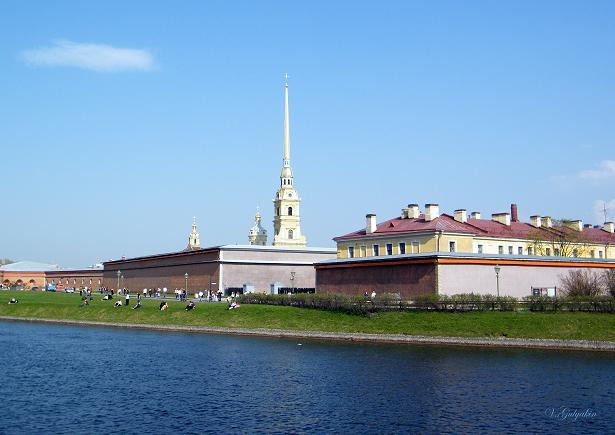
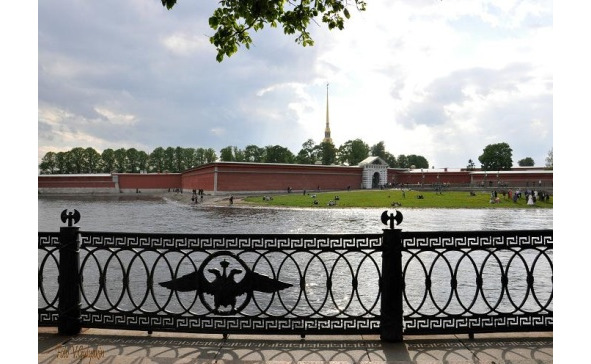
“Storm” of The St. Petersburg Fortress
Well, we start “storm” of The Peter and Paul Fortress … — quite so we, Petersburgers, in a familiar way we call Peter and Paul and if absolutely officially, — St. Petersburg — Fortress. Before starting this no laughing matter, — detailed acquaintance to fortress, — investigating all its back streets and being inspired by genius of architectural concepts, we will approach at first Ioannovsky Bridge, to very first of the St. Petersburg bridges. However, in those far times it was called Petrovsky…
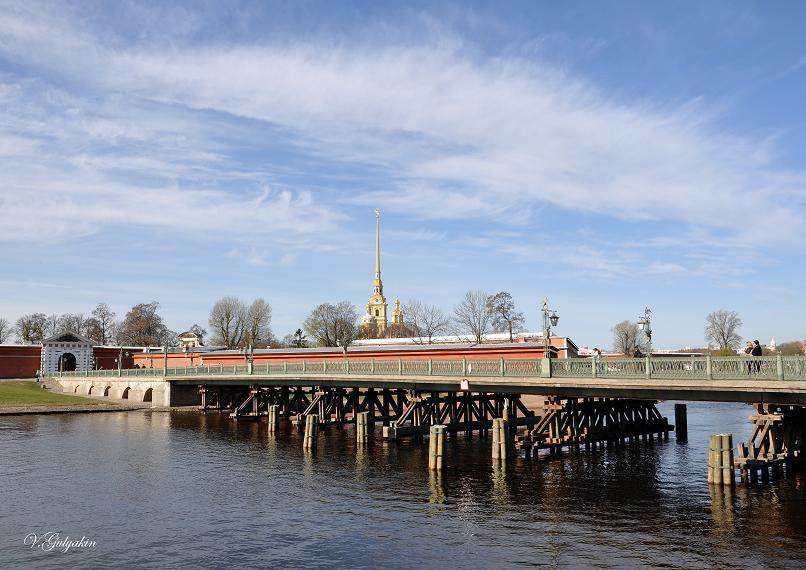
On one of pile ice-cutting blocks before the bridge the figure of “the hare who escaped from a flood” established here to the 300 anniversary of the city is well distinguishable. On one of legends, during a flood the hare found rescue, having jumped on a boot to the tsar Pyotr… Here, tourists “for luck” also throw coins, trying to get a hare directly into a pan!
Ioannovsky Bridge — one of two ways conducting in The Peter and Paul Fortress.
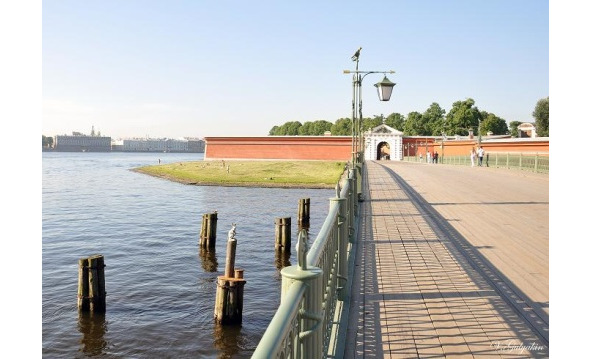
The bridge is thrown through the Kronverksky passage and connects the Hare island on which the Peter and Paul Fortress is located, to the Petrograd island where we now also are, having descended on it from Trinity Bridge.
Petrovsky Bridge, namely so it was called in the beginning, arose at the same time with construction of The St. Petersburg Fortress, was adjustable and leaned on wooden barques. Then, in 1706, instead of the floating bridge appeared lifting, already on the wooden piles replaced subsequently with stone foundations. Since 1887 began to be called Ioannovsky — according to the name of one of fortress ravelins.
A little more than 150 meters long and 10 meters wide, the bridge does not suppress the sizes, but its wooden flooring which is boomingly “giving” steps, a decor of a protective lattice with “semi-antique” lamps… Yes, link of times is felt here — mighty well!
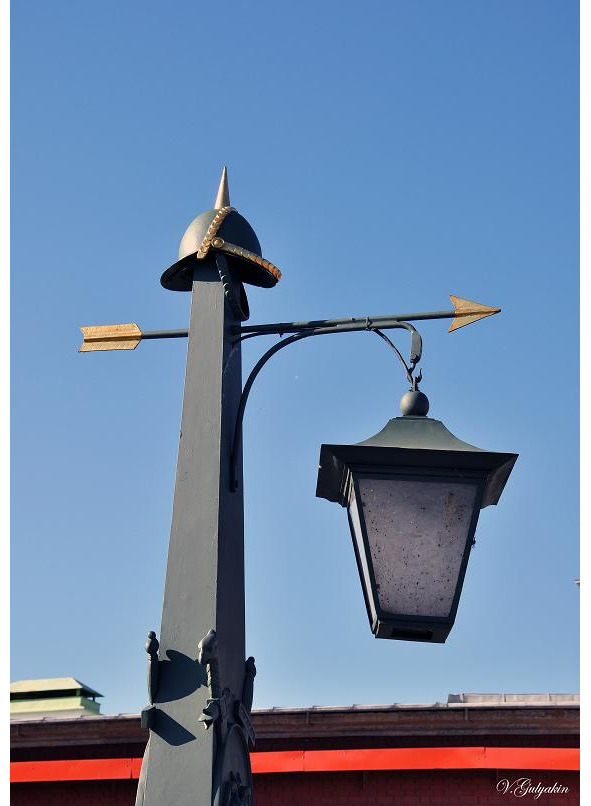
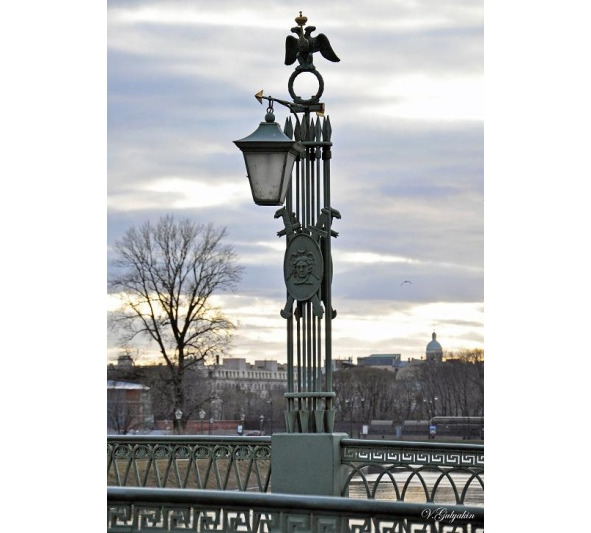
Footpath, to the left of the bridge, winding along external walls of fortress, conducts directly to the city beach, and the path which is running away to the right — to the helipad from where it is possible to make flight over the city.
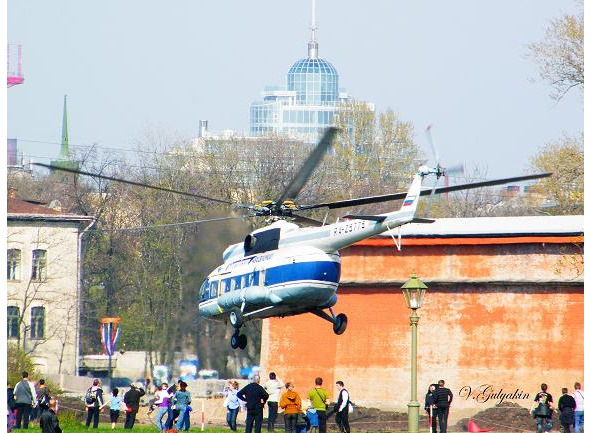
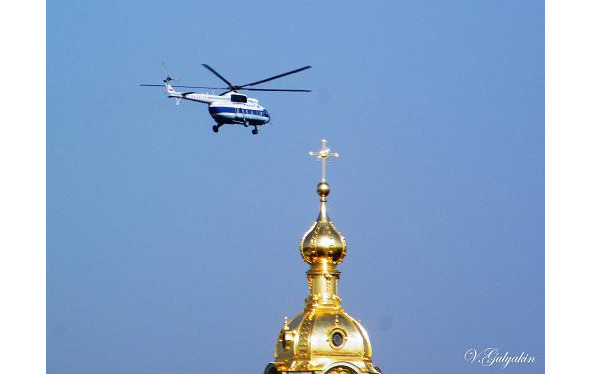
No, we will not depart, and we will go directly, anywhere without turning, — in fortress. And here, we go on a wooden flooring of Ioannovsky Bridge, listening attentively to boomingly given steps, and we go to gate of the Ioannovsky ravelin. Their cool twilight as if foretells a meeting with history…
Nevertheless, why for Pyotr this fortress, never, besides, not being involved in battles was necessary? What forced him which just took two terrible fortresses at Swedes — Noteburg and Nienschanz, — to urgently build one more? Besides, the Nienschanz located in the median Neva Current as well as possible corresponded to a role of customs “latch” for collection of duty from all who will carry down the river to Russia goods. And militarily fortress could serve still, covering future city from the West, be built it under protection of its walls. And Noteburg, — fire of its serf artillery would stop any who will dare to threaten the city from the East. But, probably, in that there was also Pyotr’s idea, — “we will threaten the Swede from here!” — that it was also not going to defend, he looked further!
Pyotr needed the fleet. Only the military fleet could make Russia the great sea power — “a leg firm to become at the sea”! But whether the fleet which construction only still began could, and crews of the ships are untrained, — whether such fleet could resist to skilled Swedes in the high sea? And where to cover the ships having big draft from the perfidious opponent, — not in narrow bends of the river?! — No, the Nienschanz for this purpose was no good at all! — The big water area, broad river lands is necessary. At the Gulf!
And here, if to construct fortress on the island, in the delta of Neva, — in that place where the river, being divided into two deep sleeves, forms the widest smooth surface of quiet water, — here then pass from the sea will be closed reliably!
“For several days the convenient place is found to that…” — Pyotr in the diary will write down. The island on which it decided to build fortress from three parties is washed by waters of wide Neva, and from the neighboring big island it is separated quite fast a channel, representing a natural defensive barrier. Here on this island the first stone of the city of Saint Apostle Peter was also put… and there was it, as we know, in the 1703rd year A.D., May, the 16th day…
Speed with which construction of fortress began, did not leave any doubts in Pyotr’s determination to embody the grand designs. In the beginning all works were conducted only by soldiers. However, it became soon clear that 15 thousand soldiers are obviously not enough, and it began to be gathered work people from civilians. In total about 20 thousand people participated in construction of fortress. By fall construction of fortress was fully complete. — It is an example and a reproach to modern builders! — And on its terrible bastions there were 300 tools!
Earth fortress, in an original form was built according to the joint plan of Pyotr and the French military construction engineer Joseph Lambert de Guerin and represented the Russia’s first military construction of not tower — bastionny! — type. — The ledges bastions located on corners hexagonal (extended from the West to the East) fortresses, unlike towers, allowed to conduct circular firing. Fortress was built in the form of earth “verok” — the strengthenings capable to conduct independent defense, had 6 bastions connected by curtains, 2 ravelins and is already connected to Beryozovyo the island (with the present Petrograd Side on which we just were) Petrovsky Bridge.
Watched construction of bastions and directed works — the tsar Pyotr, princes Menshikov, Golovkin, Zotov, Trubetskoy, Naryshchkin. Then, already dressed in a stone, in such sequence these bastions also began to be called (starting with Monarchic, southeast, and further, counterclockwise).
In the first years the fortress and the city were synonyms and therefore, its official name — Sankt-Pterburgskaya. Then, with construction of the wooden Church of the Holy Apostles Peter and Paul consecrated in April, 1704, fortress began to be called Peter and Paul…
Fortress was not involved in one battle and therefore perfectly remained, being a unique monument of the late Middle Ages in Europe.
Well, — now at way! And our way — on Ioannovsky Bridge, to Ioannovsky gate… Ioannovsky ravelin. — All these names — in honor of the tsar Ivan V, the elder brother (on the father) Peter I, the father of the empress Anna Ioannovna during whose government these gate were built. They became the last stroke of completion of all works on fortress vestments in a stone. And there was it in 1740 what also the date imprinted over an aperture of gate testifies to.
Fortress “put on in a stone” already on Domenico Trezzini’s project. This process went gradually, since 1706. As a result height of walls reached 12 meters, and their thickness — more than 20! Now each wall began to have internal and external speak rapidly between which rooms casemates are placed. Direct sites of the walls connecting bastions — curtains, — are cut through by serf gate.
Trezini is this great guest worker of the past — played a big role in construction of St. Petersburg of Petrovsky time, having given to Russia the whole 30 years of life!
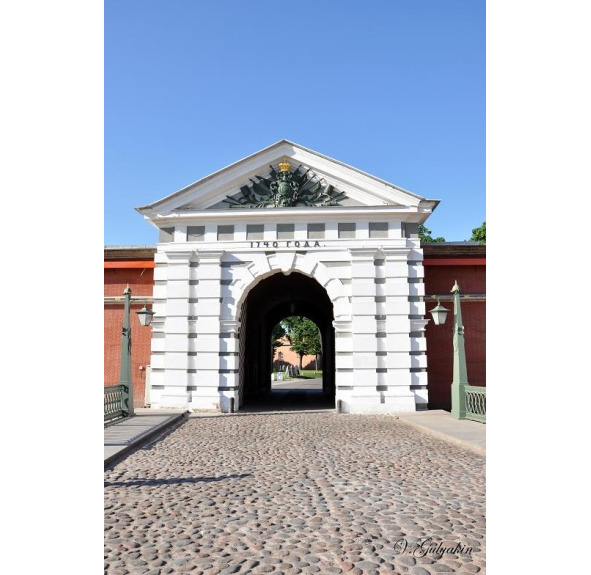
Бесплатный фрагмент закончился.
Купите книгу, чтобы продолжить чтение.